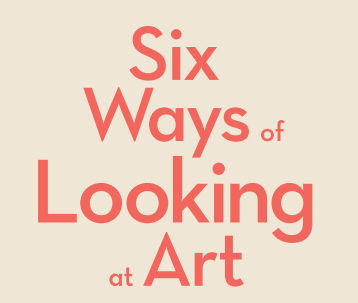
Students in Professor T. Kim-Trang Tran’s video art class find creative inspiration and expression in an unexpected source: drones. They learn how artists are using the technology and how to make drone videos themselves. But Tran pushes students to go well beyond capturing footage.
“I ask them why they would use drone footage and when it would make sense. It’s up to them to create a new visual language using the same technology others are using,” says Tran, an experimental video artist who teaches both studio art and media studies courses. “They’ve blended drone photography with studio shoots to comment on existential conflicts. One student did a commentary on surveillance and the social media generation, another on the liberation that only nature can provide, combining commentary on this topic with drone footage that mimics a bird’s view.”
Drone videos may seem distant from more familiar practices such as painting and ceramics, but they fit comfortably with the character of art education at Scripps. Whether in studio art or art history, learning at Scripps mixes the traditional and contemporary, calls upon critical thinking, and incorporates perspectives from multiple fields—all to the benefit of students with a serious interest in making art part of their professional and personal lives.
Over time, this conception of art education has spurred expansion of the programs, facilities, and opportunities available to Scripps students. Today, they can choose not only from painting and drawing, ceramics, photography, sculpture, mixed media, and art history but also digital art, video, book arts, media studies, and art conservation. In keeping with the interdisciplinary nature of a Scripps education, students often combine these areas of study with another one outside of art, such as psychology, English, economics, or biology. In the studio art major, an underpinning in art history and theory strengthens learning. Students are also exposed to professional practice through rigorous review of their work, internships, and the example and mentorship of faculty who are also active and successful artists.
Study of art history has broadened beyond Europe and the United States to take in the development of art and architecture in Asia, Africa, and elsewhere in the Americas. And since 1993, the Ruth Chandler Williamson Gallery at Scripps has provided a teaching tool, exhibition space, and paid internships for art students.
The gallery is among the spaces created to enhance art education at Scripps in recent decades. Studios appropriate for art have replaced the converted classrooms and science labs that Susan Rankaitis recalls encountering when she joined Scripps in 1990 as the first Fletcher Jones Chair in Studio Art.
In 1995, her faculty colleague Nancy Macko gained dedicated space for digital art teaching. A photography lab and darkroom are accessible around the clock, as is the Joan and David Lincoln Ceramic Art Building. Completed in 2011, the building was the final piece in the College’s plan for expanded art facilities.
“We created facilities that matched the expectations of faculty,” says Ken Gonzales-Day, who became Scripps’ first full-time professor of photography in 1995, and has since published a Pulitzer Prize– nominated book about 19th- and 20th-century lynchings in California and earned a Guggenheim Fellowship in 2017.
Teaching and the evaluation of student work have evolved alongside the art spaces. Critical theory seminars were added to enhance students’ understanding of visual culture and readiness for graduate school. Soon after Gonzales-Day came to Scripps, the department introduced a senior seminar addressing graduate school and career preparation, culminating in a juried exhibition of student work and critiques from each of the studio art faculty.
“We found ways to give students more opportunities to develop their work and obtain feedback,” says Gonzales-Day. “The goal was to make the experience richer, to allow them to see how one might function as a professional artist.”
Offerings in digital art, media studies, and video have grown in conjunction with new technologies. Courses in web design, digital photography, and graphic design responded to increased student interest in these areas. Tran’s arrival in 1999 added opportunities to include courses on moving images and for students to develop their creative ideas through a wider range of media.
Yet as much as it reflects the new, art education at Scripps is grounded in what has come before. Macko teaches a course incorporating both traditional and digital printmaking methods. Students in book arts learn the origins of today’s digital practices. Art history and studio art inform one another. “When you have historical knowledge of your craft and practice, you can think critically and are able to make the next leap,” says Tran. “To innovate, you continue the conversations that came before you. Innovation happens on a trajectory.”
The close proximity of the art history and studio art programs reinforces their connection. Mary MacNaughton ’70, professor of art history and director of the Ruth Chandler Williamson Gallery, explains, “The studios are literally outside our doors. We have an objects-focused approach, and many of the studio art professors use our collections as a resource in their teaching. Studies have shown that learning happens at a deep level when students interact directly with works of art.”
This approach benefits studio art and art history students alike. For example, says MacNaughton, ceramics students can go to the College’s Marer Collection of Contemporary Ceramics to see what others have done with clay forms. A requirement to complete at least one studio art course gives art history majors hands-on experience with materials and increased understanding of their properties.
Scripps students have also gained another opportunity that draws from both art and art history: the art conservation major. MacNaughton says, “All along, we had students with an interest in art conservation, and with good advising, they found a path to graduate training. About five years ago, we put together a track to make this easier. We already had many of the courses an art conservator needs and added a course in art conservation taught each semester by a conservation scientist. Art conservators by definition are people who are interested in working with one foot in science and one foot in the arts.”
These developments appeal to students. Tran notes that more incoming students are identifying studio art as a preferred major and submitting portfolios for faculty review. The interdisciplinary media studies major in which Tran and Macko teach digital and video art as well as seminar courses is among the largest at Scripps. More than 600 students across The Claremont Colleges, many of them from Scripps, take art classes each year. Tran sees several reasons for the interest in studying art at Scripps. She explains, “There’s the proximity to Los Angeles as a creative capital. Also, the more digitized life becomes, the more people are interested in making things with their hands again. They’re driven to creative learning, and there’s a return to craft. There is a burgeoning creative economy.”
For many, choosing an art major comes down to passion. MacNaughton says, “Art has never been a field that someone goes into to make a fortune, but it provides such tremendous job satisfaction if you find your place in the field.”
She and the other art professors prepare students to find that place, as do internships and the support of Scripps alumnae. Gonzales-Day notes, “We give students the critical framework to engage with images. All of our classes teach them to think critically and to demonstrate that visually and verbally. This undergraduate study will give them an edge in creative problem solving in any field.”
As working artists, Scripps professors can also provide students with role models and perspectives on professional and educational opportunities. Internships with magazines, museums, or advertising agencies or involving graphic design, web production, or music provide another means for art students to sort through options. Among the regular sites is the Ruth Chandler Williamson Gallery, where internships funded by C. Jane Hurley Wilson ’64 and Michael G. Wilson allow students to gain paid experience and learn best practices by assisting with publications, conservation, and exhibitions. “Some of our students graduate having organized an exhibition themselves,” says MacNaughton.
Wilson is among the many alumnae who have helped Scripps students with their paths in art. Gabrielle Jungels-Winkler ’72, for example, provides an annual scholarship enabling a graduate to continue on for a master’s degree at the Courtauld Institute of Art in London. Others make themselves available to students seeking to learn about their career trajectories.
“Scripps is a place to be empowered and to empower others,” says Macko. “There’s a ripple effect.”
While some alumnae go on to graduate school and teaching positions and others are studio artists, many more pursue a wider range of professions. They work at museums, galleries, and auction houses and in fields such as fundraising and public relations. Some go into medicine, law, or business. They include newspaper and magazine writers and critics as well as art conservators and appraisers.
Even those working outside art often continue to make it part of their lives, whether they paint at home, attend exhibitions, or lead art-related sessions at Camp Scripps alumnae gatherings. MacNaughton says, “I tell them that life has different chapters. You may not make art or be involved in the arts now, when you’re immersed in a career or raising children, but there will come a time when you can. We hope to plant the seeds that blossom later.”
For art at Scripps, growth continues as well. Professors are looking at new ways to incorporate technology into traditional fields, including book arts and sculpture. They’re also seeking to increase students’ professional preparation by inserting practical topics such as writing grant proposals and creating websites in the senior seminar.
Already, the art history program has gained an endowed faculty chair, while studio art is benefiting from the addition of the Lincoln Visiting Professor in Ceramics, a position shared with Claremont Graduate University. For students in book arts, stronger ties with the Scripps College Press are expanding opportunities for creative exploration.
And game design is among the courses taught by the first tenure-track faculty member in media studies, Assistant Professor Carlin Wing. “Art never stays in place. It always moves forward,” says Rankaitis.

Picture an artist, and the first image that comes to mind might be of a painter in a studio. But Scripps studio art and art history graduates demonstrate that there are many ways to be an artist, having turned their interests and degrees into sometimes-unconventional careers and other pursuits in which art plays an important role.

The Storyteller
Since graduation, Sarah Yates Waller ’01 has been a Los Angeles Chamber Orchestra fundraiser, full-time painter, Seattle NPR radio station reporter and producer, children’s book illustrator, and art docent in her son’s classroom. She has also worked for an organization involved in watershed habitat restoration, developed an art project on migrating salmon displayed at a Seattle natural history museum, and earned a certificate in natural science illustration from the University of Washington. Waller sees storytelling and a desire to insert art into every endeavor as the common threads in her path. Even while working on a senior project that required repairing and painting 30 violins from around the world and organizing a concert performed by Claremont Colleges students, Waller was drawn to the stories behind the musical instruments as much as the objects themselves. “What Scripps gave me was the idea that you can find what you love doing, tap into your intellect and curiosity about the world, and take them wherever you’re called to go. Art is where I’ve always been happiest. It’s so tactile and satisfying to the physical senses, yet it’s also satisfying to the intellect.”

The Lawyer
Megan Avalos ’09 added legal studies to her art history major once she discovered art law as a potential career. That led Avalos to write a senior thesis on the restitution of artworks after World War II, and both art and law have remained in her life ever since. After graduation, Avalos became an intern in the trusts, estates, and appraisals department at Christie’s and then a law firm legal assistant. Her graduate education followed a similar path: Avalos earned a master’s degree at Sotheby’s Institute of Art before going on to George Washington University Law School. Someday, the 2017 law school graduate with a love of the Dutch masters hopes to assist art collectors with charitable contributions and their trust and estate planning. But Avalos expects her first step is to build broader legal experience. “In college, I was trying to figure out how to incorporate art history into my life, to take my passion and turn it into a practical career. Law fit my interests. Trust and estate planning is a big area for art collectors. International and tax law can apply. Artists have issues with copyright law and contracts with galleries. In law school, I took a little bit of everything that was relevant, with art law in mind.”

The Editor
As an art history major, Ashley Newton ’10 developed a passion for the Italian Renaissance period. She interned in the College’s Ruth Chandler Williamson Gallery and public relations office, then earned a scholarship provided by Gabrielle Jungels-Winkler ’72 for graduate study at the prestigious Courtauld Institute of Art in London. Afterward, Newton jumped at the chance to become a publications intern at the Getty Research Institute, one of the world’s largest art history libraries. She has since been promoted to research assistant and her current position as an assistant editor, responsible for copyediting books as well as the text and promotional materials for exhibitions. Working with content ranging from early Buddhist cave temple art to modern-day music hall architecture, Newton draws on the knowledge of numerous art forms and periods she acquired at Scripps. “There are so many applications for art history in the modern world. I’ve grown to love copyediting exhibition text because there’s so much you can learn—where objects came from, why they originated there, and what it meant to be the artists creating them.”

The Conservator
Even before Scripps offered art conservation as a major, Geneva Griswold ’07 forged a path to her current position as associate objects conservator for the Seattle Art Museum. Guided by her faculty mentor, Mary MacNaughton ’70, Griswold pursued summer internships and two master’s degrees: one in art history at the Courtauld Institute of Art in London and the other from the UCLA/Getty Master’s Program in the conservation of archaeological and ethnographic materials. She gained additional training by interning at U.S. and international museums, including the Getty Conservation Institute in Los Angeles, before becoming an Andrew W. Mellon Fellow at the Fine Arts Museums of San Francisco. Since returning to her native Seattle in 2016, Griswold has managed the temporary move of thousands of pieces from the museum’s Asian art collection in addition to working on the ongoing preservation of other objects.
“I took some studio art courses but learned I’m much happier working with other people’s productions. Their choices, materials, and assembly methods are just fascinating to me. I would not be where I am today without my Scripps education and especially the guidance of Mary MacNaughton. She recognized my interests and connected me with other students and graduates. She could see my future where I couldn’t at that stage of my life and has written many recommendations over a decade.”

The Graphic Designer
Sophie Forman ’13 started out as a painter with a strong interest in color and the human body, and she continues to paint today. But the Scripps studio art and media studies major had a range of interests, including graphic design and writing. She put these to use after graduation as an assistant at the Robert Mann Gallery in New York, honing her organizational and administrative skills while working on print and digital materials and with artists. She then became a painter in the studio of artist Jeff Koons, producing large-scale reproductions of masterworks in his Gazing Ball series. Now Forman is a graphic designer for Phoenix House, a prominent nonprofit organization involved in treating drug and alcohol addiction, where her work satisfies interests in both art and social issues. “I took courses in art history and theory and design, so I got to try out a lot of different areas of art at Scripps. But until you work in a field, you don’t know which one is going to stick. As much as I love painting, I’ve thought since college that I’d end up in graphic design.”

The Art Historian
Mitra Abbaspour ’99 always loved making art. At Scripps, however, her studio art courses became a gateway through which she discovered the field of art history, which would become her career. In her art history classes, Abbaspour recognized the need for more discussions of modern art from perspectives other than Europe and the United States. Studying abroad in Madrid, she discovered her passion for the art of the Middle East. And, in her studio art courses, she found the medium of photography and the theoretical models to integrate her interests and define her path. Abbaspour went on to earn a master’s degree at the University of California, Riverside (UCR), and pursue a doctorate at the City University of New York, where her dissertation focused on the history of photography in the Middle East. Abbaspour has since worked as a curator at the Museum of Modern Art in New York and the UCR/California Museum of Photography and has taught at the Cooper Union, Hunter College, and Brooklyn College. Her scholarship is included in upcoming exhibition catalogs on artists Farhad Moshiri and Frank Stella.

